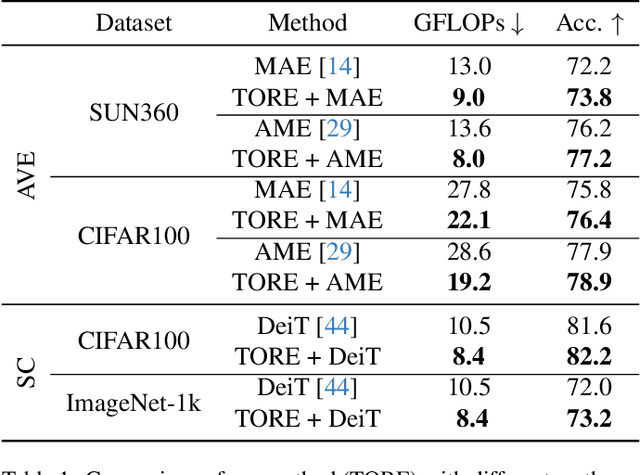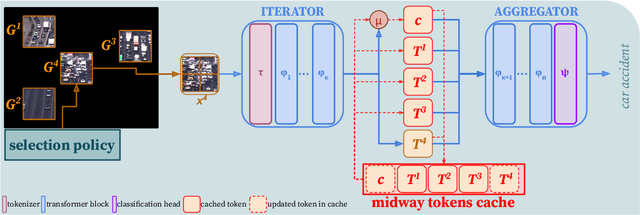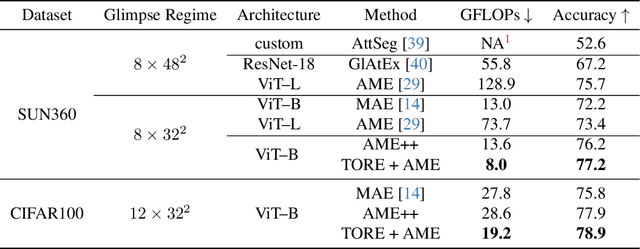Piotr Wójcik
Token Recycling for Efficient Sequential Inference with Vision Transformers
Nov 26, 2023



Abstract:Vision Transformers (ViTs) overpass Convolutional Neural Networks in processing incomplete inputs because they do not require the imputation of missing values. Therefore, ViTs are well suited for sequential decision-making, e.g. in the Active Visual Exploration problem. However, they are computationally inefficient because they perform a full forward pass each time a piece of new sequential information arrives. To reduce this computational inefficiency, we introduce the TOken REcycling (TORE) modification for the ViT inference, which can be used with any architecture. TORE divides ViT into two parts, iterator and aggregator. An iterator processes sequential information separately into midway tokens, which are cached. The aggregator processes midway tokens jointly to obtain the prediction. This way, we can reuse the results of computations made by iterator. Except for efficient sequential inference, we propose a complementary training policy, which significantly reduces the computational burden associated with sequential decision-making while achieving state-of-the-art accuracy.
Learning Nuclei Representations with Masked Image Modelling
Jun 29, 2023Abstract:Masked image modelling (MIM) is a powerful self-supervised representation learning paradigm, whose potential has not been widely demonstrated in medical image analysis. In this work, we show the capacity of MIM to capture rich semantic representations of Haemotoxylin & Eosin (H&E)-stained images at the nuclear level. Inspired by Bidirectional Encoder representation from Image Transformers (BEiT), we split the images into smaller patches and generate corresponding discrete visual tokens. In addition to the regular grid-based patches, typically used in visual Transformers, we introduce patches of individual cell nuclei. We propose positional encoding of the irregular distribution of these structures within an image. We pre-train the model in a self-supervised manner on H&E-stained whole-slide images of diffuse large B-cell lymphoma, where cell nuclei have been segmented. The pre-training objective is to recover the original discrete visual tokens of the masked image on the one hand, and to reconstruct the visual tokens of the masked object instances on the other. Coupling these two pre-training tasks allows us to build powerful, context-aware representations of nuclei. Our model generalizes well and can be fine-tuned on downstream classification tasks, achieving improved cell classification accuracy on PanNuke dataset by more than 5% compared to current instance segmentation methods.
 Add to Chrome
Add to Chrome Add to Firefox
Add to Firefox Add to Edge
Add to Edge